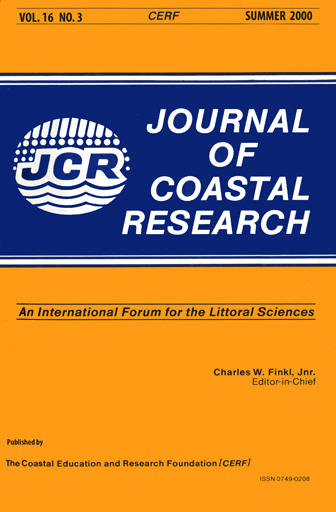Trade Wind Intensification and Hurricanes on a Caribbean Beach, Martinique Island: A Comparison of their Morphological Impacts from Field Experiments and Numerical Simulations
Keywords:
French West Indies, nearshore transport, beach and shoreface evolution, high-energy events, Trade Wind intensification, hurricanes, numerical simulationAbstract
The impacts of Trade Wind intensification and moderate hurricanes on beach sediment balance have been analysed from a study of time variations of the sediment volume of Bagasse Beach and its shoreface, on the island of Martinique (French West Indies). Field experiments (wave characteristics, longshore current velocity, bathymetric and topographic surveys) conducted at different time scales show a negative dry season sediment budget and a slightly positive annual budget for this microtidal beach. Volumetric variations computed for one day of Trade Wind intensification appear to represent about twice those for one dry season. This analysis reveals that the influence of moderate hurricanes (coastal wave heights less than 2.5 m) on the long-term (2 yr) sediment balance is weak. In order to compare these high-energy events, numerical simulations have been carried out. Comparison between moderate hurricane conditions and a Trade Wind intensification event shows that the latter is responsible for more important volumetric erosion by about 23%. At a daily scale, moderate hurricanes have a larger power of erosion, 40 m3 m-1 day-1 versus 28 m3 m-1 day-1 for a Trade Wind intensification event. However, hurricane waves last only a few hours to 2 days, while waves generated by Trade Winds last, on average, 3-4 days. This study clearly highlights the importance of Trade Wind intensification events on the short-term (order of days) evolution of this beach.


